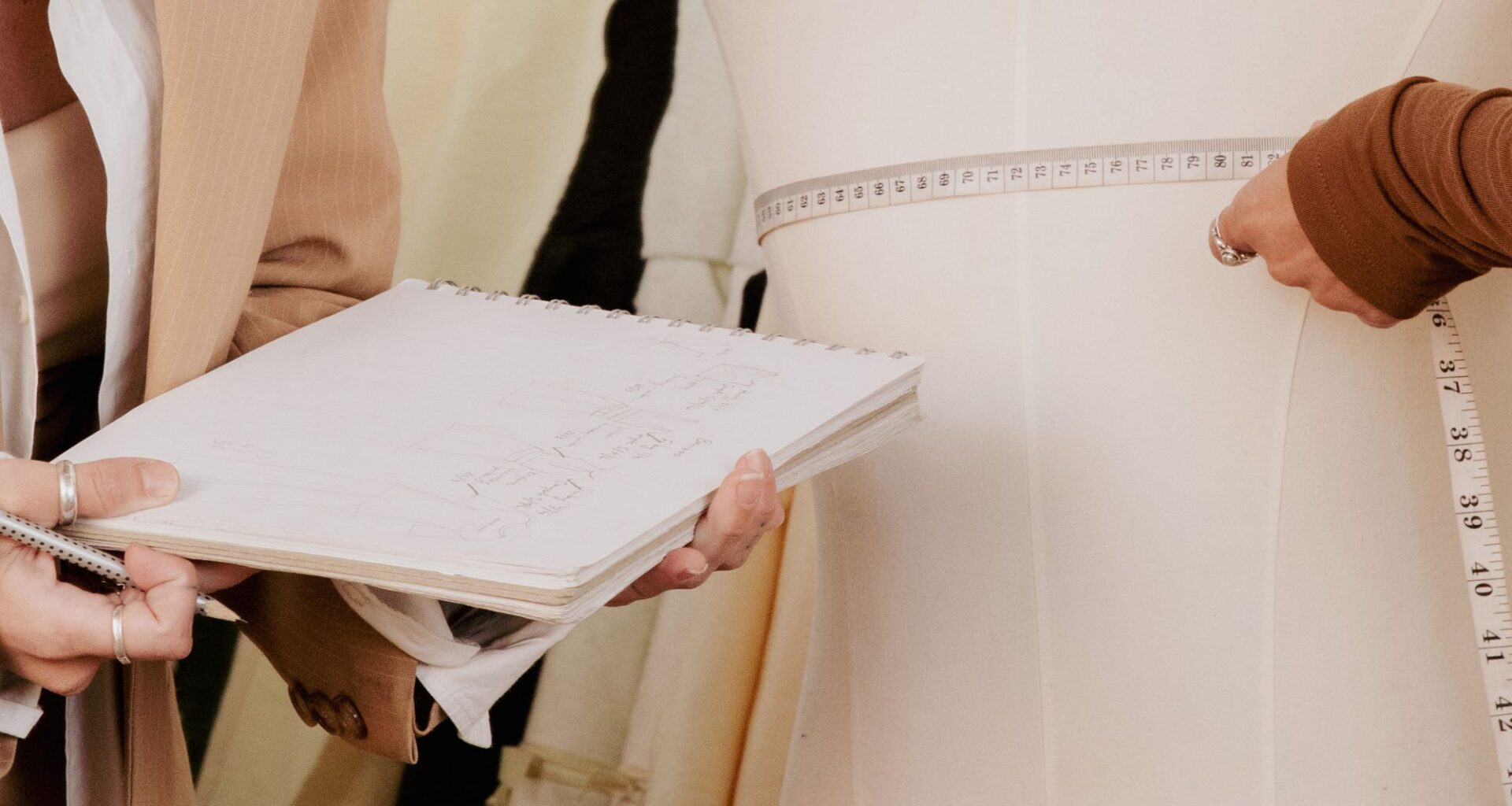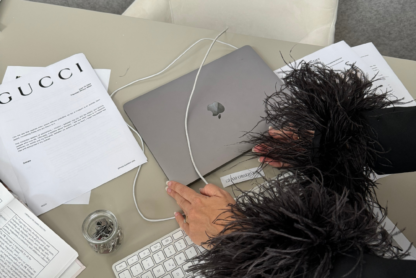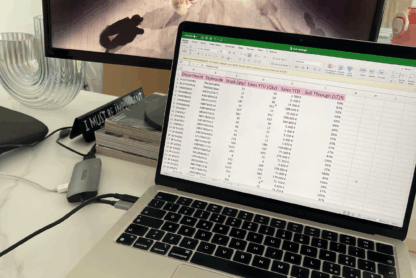A new year is here.
The new year signifies new beginnings, inspiring everyone to strive for improvement and make plans. Motivation is stronger than ever at this time, and you may find excitement in contemplating what you want to achieve in the new year and how you envision your life. Instead of merely pondering your aspirations for 2025, let’s be more intentional about setting your goals.
You can make plans and set goals for various aspects of your life (and it’s beneficial to have a mix). In this specific article, I want to share tips for setting goals related to your fashion career.
Grab a pen and paper because this article is very practical.
Why you need to set your fashion career goals.
Many people don’t give enough importance to goal setting, but this is a step you should not skip because there is no journey without a destination in mind.
To stress the importance of setting your fashion career goals, let’s be direct: If you don’t set goals, you will likely not achieve them.
My best years happened when I started setting both personal and professional goals. Without setting them, I found myself going with the flow, waking up every day and waiting for things to happen instead of taking action towards what I wanted to achieve.
Apart from the fact that setting goals will immensely help you in achieving them, you should set goals to feel excited and motivated about the new year.
So, let’s begin.
Reflect on this past year.
Before thinking about the year ahead, I encourage you to look back at these past 12 months. It’s crucial to understand where you are starting from to determine where you want to go next. Think of it like using Google Maps to navigate to a new place; you need to start with the origin.
Reflecting on the past year will also help you gain clarity about the new goals you want to set. Take a journal and write down what happened in these past 12 months. To capture important details, review your camera roll or scroll through your Instagram feed or stories archive. You might not remember everything you did these months. What happened in January, February, March, etc.? Write everything down.
When looking back on the past year, ask yourself:
- What worked?
- What did you like?
- What didn’t you like?
- What did you want to do but didn’t?
- What do you want to stop doing?
- What skills or strengths did you discover about yourself?
- What do you want to continue doing?
Answer these questions in a journal. Writing your thoughts is more powerful and efficient compared to just leaving them in your head.
Now, you can move on to set your fashion goals for the new year.
Write down your goals.
Get your journal out once again because it’s time to jot down your fashion career goals for the new year. Keeping these goals in your head doesn’t really work. If you do that, you might reach the end of the next year with your goals still just thoughts and not actions. Write them down on paper so they become real plans. Writing your goals makes them clear and helps you remember them. Don’t leave your dreams in your head—put them on paper in your journal, and let’s make them happen in the coming year. This way, you have a plan to follow and make your fashion career better.
Set SMART goals.
Many believe setting goals is just about writing down a list of things you want to achieve but if you want to see results, you have to go deeper. You must be specific with your goals.
Many often say I want to work in fashion but it’s too generic. So I encourage you to be specific as much as possible.
A system used to set goals efficiently is to set SMART ones.
SMART is an acronym that stands for Specific, Measurable, Achievable, Relevant, and Time-bound. I’ll explain what it means with specific examples related to your fashion career goals so you can use them as a guide when writing yours.
Specific:
Goals should be well-defined and specific, answering the questions of who, what, where, when, and why. A specific goal provides clarity and focuses efforts on a particular outcome.
Non-Specific: “Acquire new skills.” or “Get a job in fashion”
Specific: “Learn Microsoft Excel applied to the fashion industry to pass job interview tests.” “Land an internship in the PR department at Saint Laurent or Dior”.
Measurable:
Goals should include concrete criteria for tracking progress and determining when the goal has been achieved. Measurable goals help quantify the extent of success.
Non-Measurable: “Increase my fashion industry knowledge.” or “Read more fashion books”.
Measurable: “Read two industry-related books and complete an online course within the next three months.“
Achievable:
Goals should be realistic and attainable. While it’s great to aim high, setting goals that are too ambitious or beyond one’s control can lead to frustration and demotivation.
Unachievable: “Become the lead designer for a major fashion brand within a year.“
Achievable: “Secure a junior designer position/internship within the next six months.“
Relevant:
Non-relevant: “Learn advanced photography skills for a career in fashion marketing.” While photography skills can be beneficial, they are not directly relevant to a career in fashion marketing. A more pertinent skill in this context might be data analysis using tools like Excel.
Relevant: “Enhance proficiency in Excel to analyze sales data.“
Time-bound:
Goals should have a timeframe or deadline. A time-bound goal creates a sense of urgency, helps prioritize activities, and allows for the measurement of progress over a defined period.
Open: “Apply for jobs in fashion“
Time-bounded: “Learn the ins and outs of the fashion job applications by completing the Break into the fashion industry online course within the next two months, dedicating at least two hours per week to study and research.“
Examples of specific fashion career goals you can set:
- Get an internship in the PR department at Saint Laurent.
- Attend two industry events (either online or in person) each month to connect with fellow professionals, and potential mentors and learn something new.
- Take one course every two months to learn a specific skill: Excel, fashion journalism…
- Work on a project to update/build the portfolio within the next month.
- Volunteer during February/September Fashion Week
- Build a LinkedIn profile within the following
- Pitch 3 fashion magazines/month with your article ideas
- Work with stylists by assisting them on at least 5 photoshoots
- Find a mentor in the fashion industry
- Join a community of fellow fashion enthusiasts
- Travel to New York to do a Summer Internship
- Travel to Paris for a Spring Internship
- Become fluent in English/French/Italian
Don’t set too many goals for the beginning of the month but spread them throughout the year.
Set your new habits.
Alongside your goals, you should also set habits, new routines, and activities that will help you achieve your goals. This step is very important. Many people stop at writing their goals, and that is already a huge thing, but setting habits is a fundamental part.
You have to associate a set of habits with each goal you set, which will help you achieve each.
While setting goals provides a clear direction and purpose, it is the daily habits and routines that pave the way for success.
Goals provide the destination, but habits are the vehicle that takes you there. I often say that actions will make the difference so You need to intentionally shape your daily routines, ensuring that each step you take aligns with the vision of the future you want to create. By setting up specific habits in your life, you not only enhance your likelihood of achieving your goals but also cultivate a foundation for continuous personal and professional growth.
Habits are the building blocks of consistency which is the key to seeing results.
It’s similar to going to the gym – you can’t expect to stay fit and active if you only go once a month. Apply the same idea to your career in fashion.
Consistently taking small, positive actions day in and day out builds momentum toward your goals. Regularity reinforces the behavior needed to make progress, creating a sense of discipline and commitment.
Habits are not just about what you do, they shape who you are. As you consistently engage in activities aligned with your goals, you begin to see yourself as someone capable of achieving those goals. This shift in identity strengthens your confidence.
For example, if you want to get a job in fashion, your new habits to make it happen can be:
I’ll apply for 10 fashion jobs/week.
Per month, I’ll connect with 8 fashion professionals.
I’ll read 2 fashion books per month. You can also already set a list of books you want to read and update along the way. We also run a monthly book club with 365 days of fashion if you want to stay accountable with a group.
I’ll read fashion news every day before school/work/during my lunch break.
To learn about fashion daily year-round, I’ll subscribe to 365 days of fashion.
I’ll take a new fashion course every 2 months.
By X month, I’ll learn Excel.
I’ll listen to 3 podcasts per week.
Build a vision board.
You can also make a vision board to complement your list of goals. I conducted a live session with the students of my online fashion courses, guiding them step by step through this process. I personally follow this practice, creating a vision board each year that I use as my phone wallpaper. You can print your vision board and place it near your bed, in your closet, or on your bathroom mirror—anywhere you’ll see it every day. Glancing at your vision board will help keep you motivated and serve as a daily reminder to take steps toward your goals.
Write down your goals every morning.
Another practice that can help maintain momentum is to write down your goals every single day, preferably in the morning when you wake up.
As a logical person, I don’t believe in “woohoo” things, but I’ve noticed a significant difference in my mornings, productivity, and goal achievements since I started using this technique years ago. I also mention it in my book.
I hope this article has inspired you to start or enhance your goal-setting practice. I’d love to see your goals, so feel free to tag me at @glamobserver when you set your goals or use the tips from this article.








How does reflecting on the past 12 months, as suggested in the article, contribute to gaining clarity in setting new goals for the future? regard Telkom University